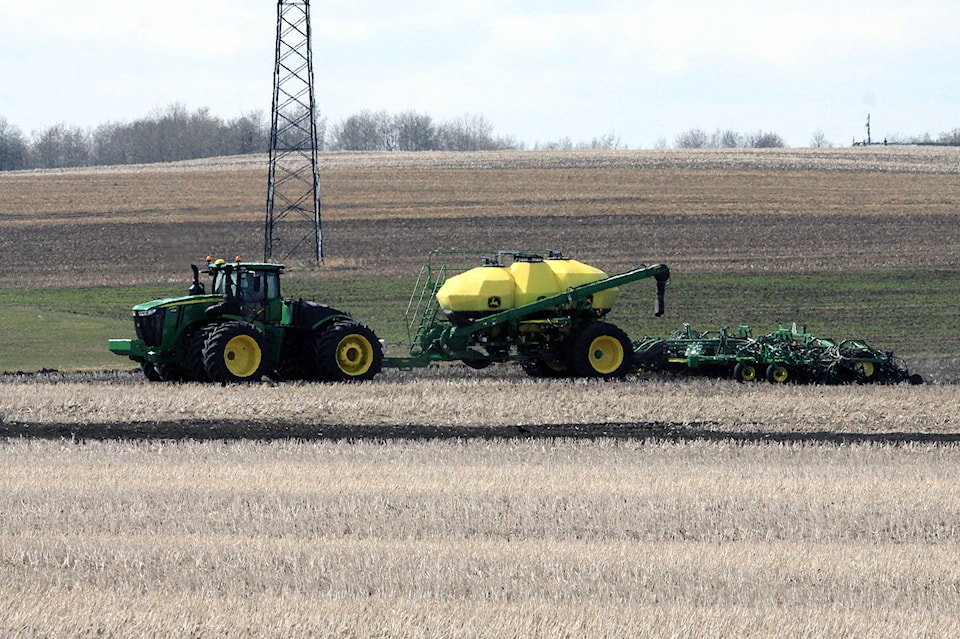With the forecast calling for warmer temperatures and some rain for the next seven days, seeding could be finished in central Alberta before the May long weekend.
“With the warmer temperatures back in March, there were a lot of farmers that managed to get in some early seeding,” said Harry Brook, Alberta Agriculture and Forestry crop information specialist.
“I noticed a lot of fields that had been worked in the region last week and even with the cold, plus some snow the previous two weeks, the recent heat might be enough to begin the germination of those early seeding crops.”
He added that the crops that made it into the soil before the colder weather in late April likely survived as there wasn’t a major killing frost, simply just some added moisture that will provide better conditions in which to kick start growth.
“Being early means there is still that potential of a major frost, but it’s not as big a risk when we see some consistent weather,” Brook said.
“For those that seeded really early, when soil temperatures might have been around two or three degrees, it might take two or three weeks for those crops to wake up and germinate. Though it could be sooner with the warmer forecasts for the next week.”
And even if a frost were to hit, Brook explained the fact many crops go in the ground early, “may simply set producers back a bit instead of being a disaster, as the seeds were hardened up some by surviving the cooler temperatures after seeding.”
All of that being said though, Brook warned that crops across the region and indeed across the province still need additional moisture over the next month to continue that steady growth necessary to become a good crop.
“While the moisture received earlier this spring helped and the heat that came earlier this month — these crops need more consistent moisture over the next few weeks as the seeds start to emerge and are eager to get growing,” he said.
Crop changes
With the continuing political games being played between China and the United States, which Brook stated has Canada caught in the middle, farmers in the central part of Alberta are not leaning as much on canola crops as they have in the past.
Brook noted that Agriculture Canada is predicting a drop in canola acres of less than 10 per cent across the country.
“However, from the producers me and others in the office have spoken to, that figure in Alberta is probably a lot closer to 15 per cent or higher,” he said.
“We are seeing a lot more farmers shifting to seeding more wheat and barley, even a few that are planting more peas this spring.”
There is one other big factor that many farmers have based seeding decisions on and it’s all about what is still in their bins.
“There are many producers, the vast majority being in the Peace region, that are still trying to sell off their crops from last year,” he added.
“The fact some of those crops were taken off late and weren’t in as good a shape has meant they were waiting for better pricing. This is also causing some farmers problems with cash flow and that, in turn, is creating issues with them being able to buy inputs for this year.”
